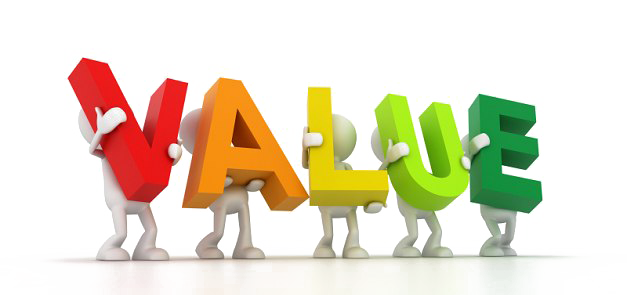Recently I did a workshop on Defining Your Value Proposition for some business students from Xavier University. I have done similar workshops for my clients previously, as this is a topic I really enjoy speaking about. I will typically begin with the TED talk from Simon Senek, detailing the “Golden Circle”. I think he does a great job of articulating the importance of defining “Why” when creating your value proposition.
I have learned many different ways to define your value proposition over the years, but the one that resonates the most is often referred to as the feature, benefit, value ladder. Very simply you begin with your product(s) as they are the core of your value. Then identify the features of your products. These are typically the differentiators in your product “specs” versus that of your competition. For example, my medical device is less painful to my patient during a procedure or my software is faster and more robust than my competitors, etc. These features/attributes can be technical, operational, or simply distinctive.
After identifying the features, now list the benefits that these features/specs/attributes bring to your client. These benefits (quantifiable and non-quantifiable) demonstrate the advantage gained (or money saved) from using your product(s) versus those of your competitor. Some of these benefit types may be performance, economical, or even emotional or psychological. In the above example, the benefit from my medical device being less painful may be a shorter recovery period, less medicine required reducing the overall cost, etc. By my software being faster and more robust, your managers receive more reliable information in a timely period allowing them to make quicker informed decisions.
The near top of the ladder is where you define the value(s) you bring to your client. Now, let’s put it all together and build a value proposition together:
1. Our product is a time tracking system for project employees. Project workers have traditionally been a challenge to monitor, present difficulties in trying to prevent false time reporting, and paying accurately and timely requires focus and is time-consuming for the finance team.
2. Our key features are: keyfab used for check-in/check-out, photo ID verification, and GPS tracking.
3. Our key benefits from these features are: accountability, accuracy, and real-time monitoring
4. Our key values are: compliance, fraud detection and security, and confidence in the process.
5. The value proposition our product offers our clients is a stress-free payroll experience for the finance team.
The question I receive the most is what is the difference between a feature and the benefit. The easiest way to explain this is the feature is a spec or attribute of what your product “does” for your client (photo identification). Whereas the benefit is what provides the advantage for your product (accuracy of who is doing the work and who should be paid).
If you need help defining your value proposition or updating your sales model, please reach out to me.


